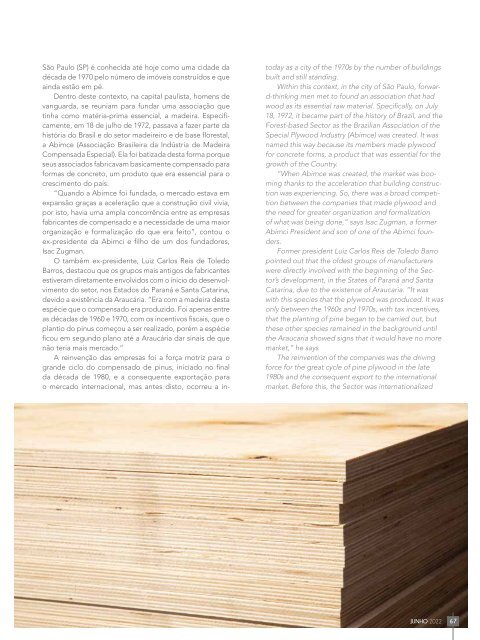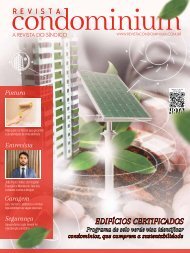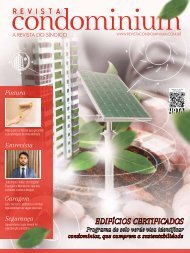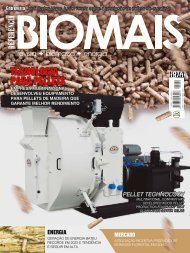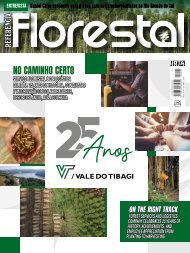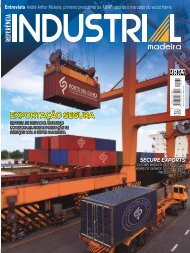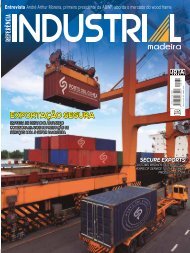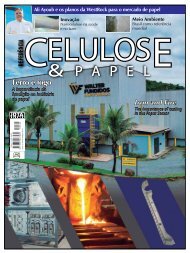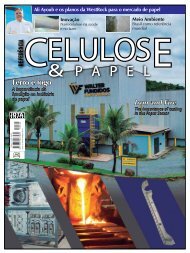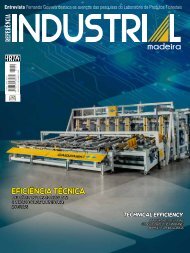Create successful ePaper yourself
Turn your PDF publications into a flip-book with our unique Google optimized e-Paper software.
São Paulo (SP) é conhecida até hoje como uma cidade da<br />
década de 1970 pelo número de imóveis construídos e que<br />
ainda estão em pé.<br />
Dentro deste contexto, na capital paulista, homens de<br />
vanguarda, se reuniam para fundar uma associação que<br />
tinha como matéria-prima essencial, a madeira. Especificamente,<br />
em 18 de julho de 1972, passava a fazer parte da<br />
história do Brasil e do setor madeireiro e de base florestal,<br />
a Abimce (Associação Brasileira da Indústria de Madeira<br />
Compensada Especial). Ela foi batizada desta forma porque<br />
seus associados fabricavam basicamente compensado para<br />
formas de concreto, um produto que era essencial para o<br />
crescimento do país.<br />
“Quando a Abimce foi fundada, o mercado estava em<br />
expansão graças a aceleração que a construção civil vivia,<br />
por isto, havia uma ampla concorrência entre as empresas<br />
fabricantes de compensado e a necessidade de uma maior<br />
organização e formalização do que era feito”, contou o<br />
ex-presidente da Abimci e filho de um dos fundadores,<br />
Isac Zugman.<br />
O também ex-presidente, Luiz Carlos Reis de Toledo<br />
Barros, destacou que os grupos mais antigos de fabricantes<br />
estiveram diretamente envolvidos com o início do desenvolvimento<br />
do setor, nos Estados do Paraná e Santa Catarina,<br />
devido a existência da Araucária. “Era com a madeira desta<br />
espécie que o compensado era produzido. Foi apenas entre<br />
as décadas de 1960 e 1970, com os incentivos fiscais, que o<br />
plantio do pinus começou a ser realizado, porém a espécie<br />
ficou em segundo plano até a Araucária dar sinais de que<br />
não teria mais mercado.”<br />
A reinvenção das empresas foi a força motriz para o<br />
grande ciclo do compensado de pinus, iniciado no final<br />
da década de 1980, e a consequente exportação para<br />
o mercado internacional, mas antes disto, ocorreu a intoday<br />
as a city of the 1970s by the number of buildings<br />
built and still standing.<br />
Within this context, in the city of São Paulo, forward-thinking<br />
men met to found an association that had<br />
wood as its essential raw material. Specifically, on July<br />
18, 1972, it became part of the history of Brazil, and the<br />
Forest-based Sector as the Brazilian Association of the<br />
Special Plywood Industry (Abimce) was created. It was<br />
named this way because its members made plywood<br />
for concrete forms, a product that was essential for the<br />
growth of the Country.<br />
“When Abimce was created, the market was booming<br />
thanks to the acceleration that building construction<br />
was experiencing. So, there was a broad competition<br />
between the companies that made plywood and<br />
the need for greater organization and formalization<br />
of what was being done,” says Isac Zugman, a former<br />
Abimci President and son of one of the Abimci founders.<br />
Former president Luiz Carlos Reis de Toledo Barro<br />
pointed out that the oldest groups of manufacturers<br />
were directly involved with the beginning of the Sector’s<br />
development, in the States of Paraná and Santa<br />
Catarina, due to the existence of Araucaria. “It was<br />
with this species that the plywood was produced. It was<br />
only between the 1960s and 1970s, with tax incentives,<br />
that the planting of pine began to be carried out, but<br />
these other species remained in the background until<br />
the Araucaria showed signs that it would have no more<br />
market,” he says<br />
The reinvention of the companies was the driving<br />
force for the great cycle of pine plywood in the late<br />
1980s and the consequent export to the international<br />
market. Before this, the Sector was internationalized<br />
JUNHO 2022 67


